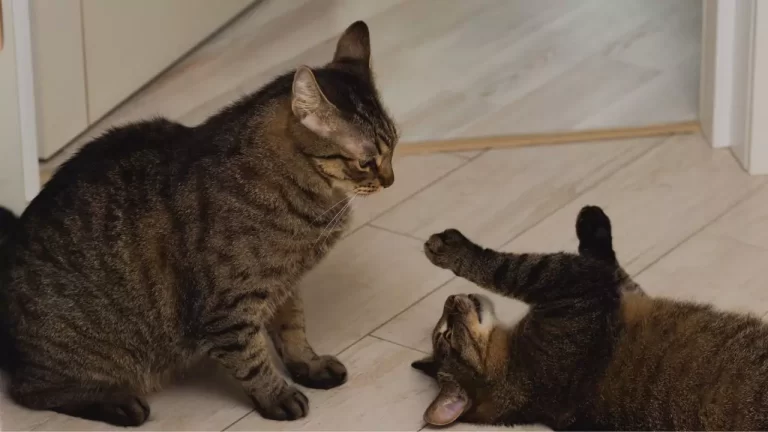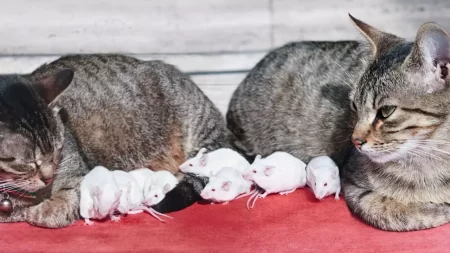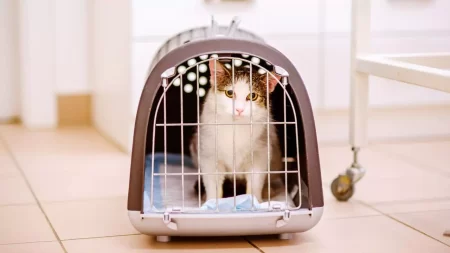Yes, cats can kill each other in a fight. While not common, serious injuries and even death can occur when cats become aggressive and attack each other.
Cats have sharp teeth and claws that can inflict lethal wounds if used in an attack. However, there are steps cat owners can take to prevent fights and minimize the risk of cats harming one another.
Can Cats Kill Each Other?
Cats can and do kill each other on occasion. Usually, these fights arise from territory disputes, competition over resources like food or mates, or misdirected play aggression. Some key reasons cats may fatally injure or kill another cat include:
- Territorial Disputes: Cats are very territorial and fights can erupt when a new cat is introduced or when cats encounter neighborhood cats outside. These disputes can turn violent.
- Competition Over Resources: Limited resources like food, water, shelter, and mates can trigger serious fights between cats vying for access.
- Redirected Aggression: A frightened or startled cat may lash out and attack another cat nearby. This redirected aggression can lead to injury.
- Rough Play: What starts as playful wrestling between cats can escalate into an aggressive encounter, especially between cats who don’t know each other well.
In addition, factors like overcrowding, lack of spaying/neutering, and cats with aggressive tendencies make serious fights more likely to occur. The injuries inflicted, like deep puncture wounds and lacerations, can prove fatal in some cases.
How to Prevent Cat Fights?
While you can never fully eliminate the risk of cats fighting, there are steps owners can take to greatly reduce the chances:
- Spay/Neuter Cats: Unaltered cats tend to be more territorial and aggressive. Spaying or neutering cats curb these tendencies.
- Provide Adequate Resources: Ensure each cat has their own food, water, scratching posts, litter boxes, and resting areas. This eliminates competition.
- Reward Good Behavior: Use treats and praise to reinforce peaceful behavior between cats. This helps them form positive associations.
- Enrich Their Environment: Provide interactive toys, climbing structures, and hideaways to keep cats engaged and stimulated. A bored cat is more likely to pick fights.
- Give Them Space: Allow cats to have their own safe zones in the home they can retreat to when needed. This reduces conflict and stress.
What to Do If Cats are Fighting?
If you do experience a fight between household cats, here’s how to respond:
- Interrupt the Fight: Make loud noises, spray water, or otherwise distract the cats to stop the attack without putting yourself at risk of injury. Avoid reaching into separate fighting cats.
- Check for Injuries: Look for bite marks, scratches, and other wounds after the altercation. Seek prompt veterinary care for any significant injuries.
- Consult an Expert: If fights persist, seek help from a veterinary behaviorist. They can assess aggression triggers and advise on management techniques. Medication may also be recommended in extreme cases.
- Reintroduce Slowly: After a serious fight, separate cats and reintroduce them gradually over a period of multiple weeks. Go slow to avoid another confrontation.
- Enhance Enrichment: Step up environmental enrichment measures to alleviate stress and boredom that may be contributing to fighting. More playtime, cat trees, and engaging toys can help.
Conclusion
While fatal cat fights are uncommon, cats can inflict lethal injuries on each other in aggressive encounters stemming from territorial disputes, competition, and redirected aggression. However, spaying/neutering, proper socialization, ample resources for each cat, and consulting behavior experts when needed can significantly reduce fighting and associated risks.
Staying alert to body language indicating brewing conflict and interrupting fights swiftly is also key to preventing harm. With proper care and management, owners can successfully keep the peace in a multi-cat household.







